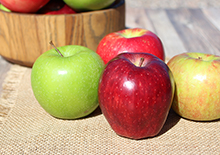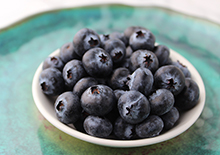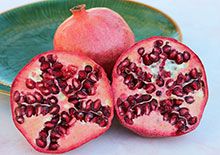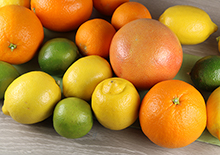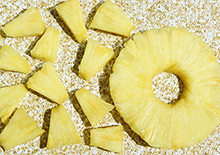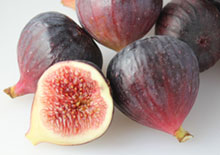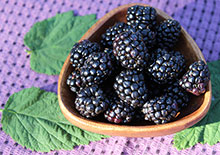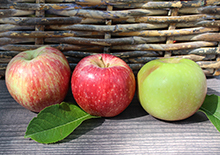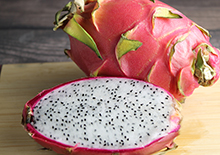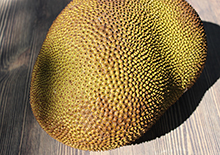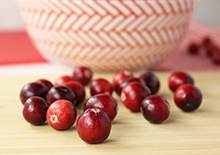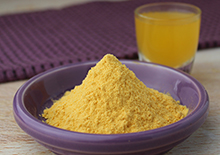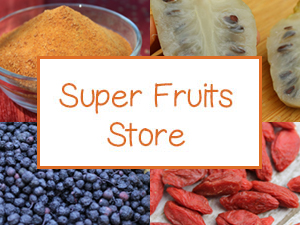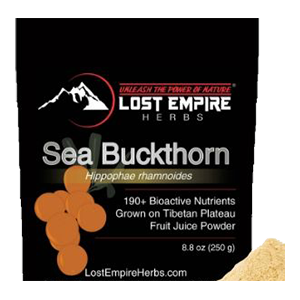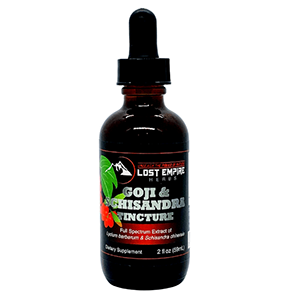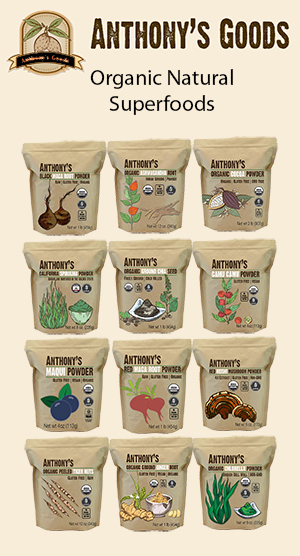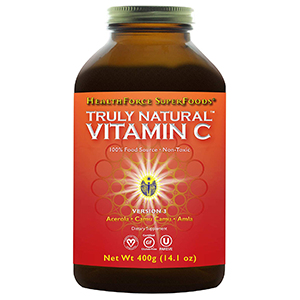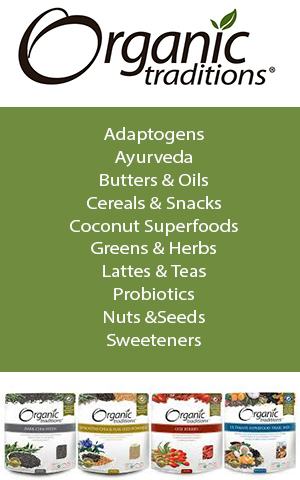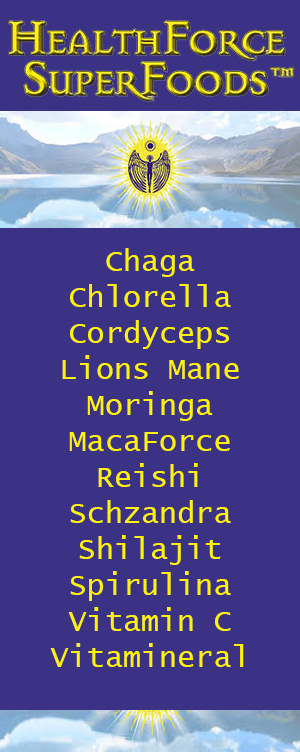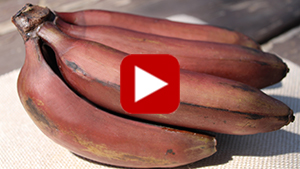- Home
- Super Fruits
- Red Banana Nutrition
Intro | Red Banana Vs Yellow Banana | Red Banana Nutrition | How to Eat | Red Banana Review | Precautions
Red Banana Nutrition and Comparison to Yellow Banana
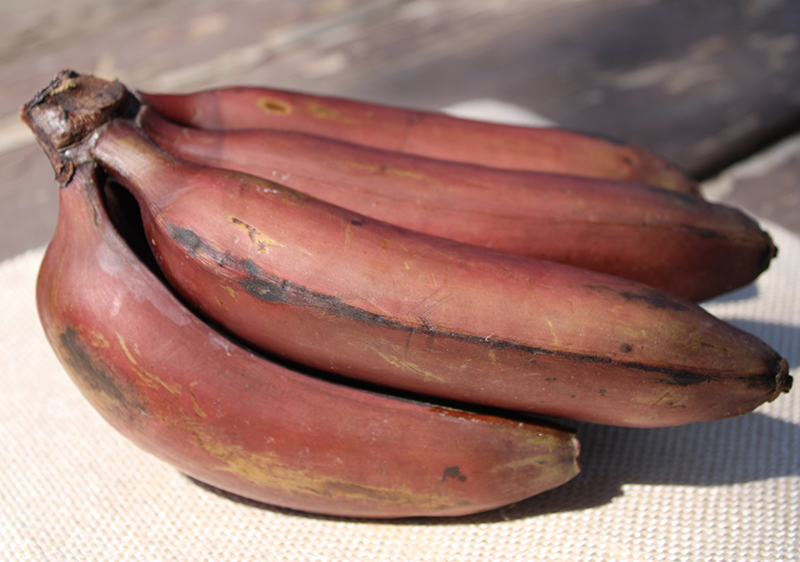
The red banana is not a wild species but is actually cultivated and from the same AAA group as common yellow bananas, like the Cavendish. Both are considered "dessert bananas" rather than "cooking bananas".
The most popular cultivar in North and Central America is the Red Dacca, but there are many others depending on the region grown.

Red Banana Vs Yellow Banana
Table of Contents
Intro | Red Banana Vs Yellow Banana | Red Banana Nutrition | How to Eat | Red Banana Review | Precautions
SIZE and SHAPE
Red banana is usually short, straight and plump whereas the yellow banana is long, curved and slender. The unpeeled red banana can also have a more flattened look compared to yellow.
TASTE AND TEXTURE
Red banana is often described to be sweeter than the regular yellow variety, however, we have not noticed much of a difference comparing the two. The texture of red banana is definitely a bit softer and one might say "creamer." Some say red bananas have a subtle raspberry taste, but this may depend on cultivar.
COLOR
The most obvious difference is in the color of the peel. Red bananas have a reddish-brown to maroon color. There are several different cultivars of the red banana, the fruit pulp can range from off-white to yellow and some say that there are varieties with a slightly pink fruit. Our side-by-side comparison shows that the red banana can have more of a yellow color next to the whiter common banana.
GROWING METHODS
While it’s hard to find organic red bananas, they are never genetically modified. Yellow Cavendish bananas are widely available as an organic non-GMO variety but conventionally grown types are almost always GMO and non-organic.
SHELF LIFE
The red banana has a longer shelf life than the yellow one, perhaps because the peels are slightly thicker.
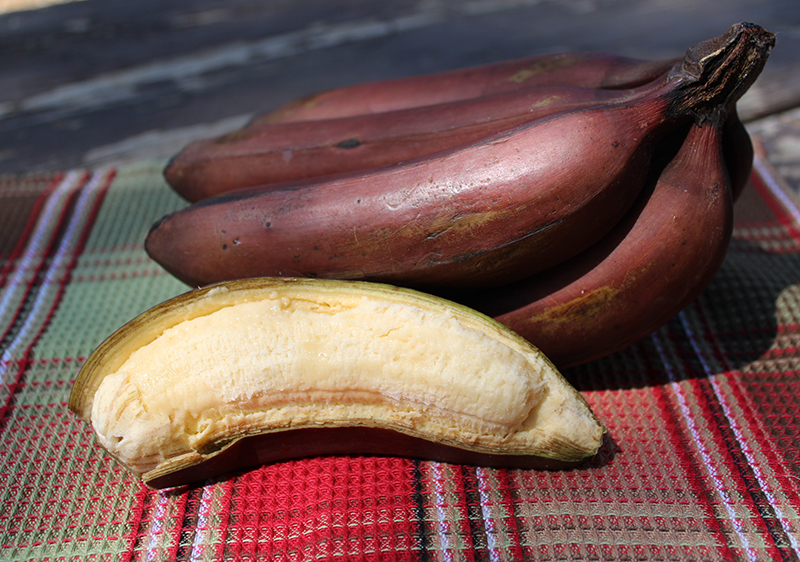
Red Banana Nutrition
When it comes to red banana nutrition facts, like other bananas, red is also a good source of MANGANESE, POTASSIUM, VITAMIN C and VITAMIN B6 as well as small amounts of magnesium and other trace nutrients.
Red bananas are high in fiber but also carbohydrates, mostly from sugars and some starch. One medium red banana has about 27 grams of carbohydrates and 3 grams of fiber. So, for those following a Ketogenic diet, they are not an ideal carb-to-fiber ratio. For others however, they can be an energizing food for workouts or exercise regimens.
There is a lot of online information parroting that red bananas are a great source of antioxidants like carotenoids and anthocyanins. While the peels do have these pigments present, we would argue that this is somewhat of an exaggeration when it comes to the fruit itself.
Yes, both red and yellow bananas do have some carotenoids, identified by their internal yellow color.
And sure, some red cultivars may have a pinkish fruit pulp with slightly more, but the amount compared to other foods is minuscule. In fact, one brand of red banana lists 0% for vitamin A on its nutrition facts label.
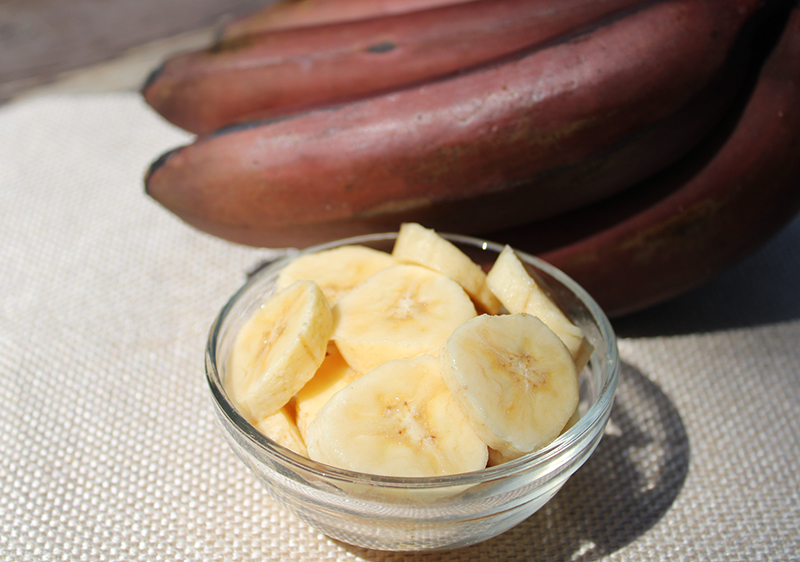
How to Eat Red Banana
Like yellow bananas, red bananas need to ripen before consumption. This is when they develop black spots at room temperature.
They can be consumed straight from the peel or used any way that you would use a common banana. They are especially useful as a frozen ingredient in smoothie recipes or to make the popular "banana ice cream".
While eating bananas might not be for everyone and certainly not on the Keto diet, they can be healthier food options for some people. For example, as a replacement to refined sugary sweet snacks.
When is the right time to eat a banana? We personally adhere to basic food combining principles and mostly eat any type of fruit first thing in the morning rather than throughout the day or with meals.
The bottom line, it's best not to over-consume bananas as they are very high in sugar and calories. They are better eaten in moderation within a well-balanced diet.
Red Banana Review
In summary, we wouldn't consider the red banana, like the Red Dacca, a superfruit just because it's smaller and wilder-looking than the Cavendish variety. From a nutritional standpoint, red bananas are more like common yellow bananas, being a cultivar from the same group.
They simply have a slightly different shape and texture. A flavor difference may be somewhat noticeable with other red types, but we found they tasted pretty much the same.
In addition, it is important to keep in mind that red bananas are often more expensive than yellow bananas so this could be a deciding factor for many people. Currently, they are about 4 dollars a pound whereas normal bananas are about .60 cents a pound.
If you do wish to give them a try, they are often available as an imported fruit next to yellow types in many supermarkets and/or health food stores.
Precautions:
Consult your health practitioner before adding red banana to the diet on a frequent basis especially if pregnant, nursing, taking prescribed medication or if you have a serious medical condition.
